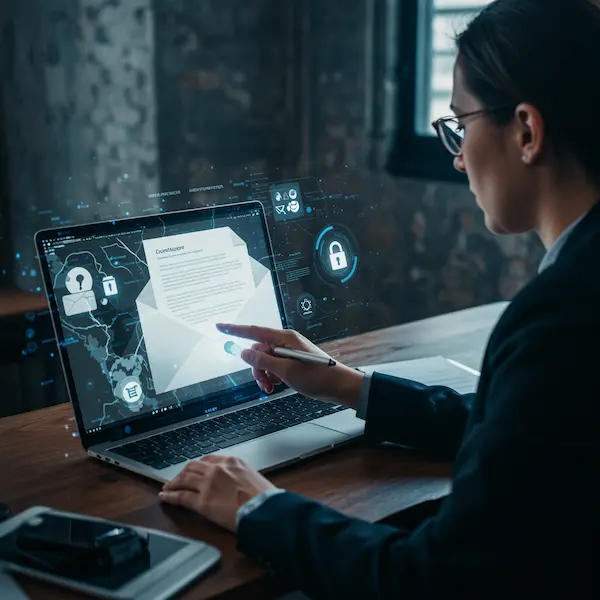
Table of contents
Email: Evolution Towards a Digital Trust Infrastructure
Email is not a technology of the past; it is a constantly evolving digital infrastructure, capable of adapting to future demands. Despite predictions about its disappearance, email maintains its status as the most universal, interoperable, and legally sound channel for professional, administrative, and commercial communication.
Its strength lies in being based on open standards (SMTP, IMAP, MIME) and not depending on private platforms, which guarantees traceability and authentication that other systems still do not offer.
This persistence is consolidated thanks to the convergence of technologies that transform it from a simple communication channel into a trust infrastructure. This trust is built on three fundamental pillars: authentication, artificial intelligence, and probative traceability.
1. Enhanced Authentication
Email, which was born without authentication mechanisms, has evolved into a system capable of verifying the identity of each sender.
Technical Verification:
Protocols such as SPF (which validates sending servers), DKIM (which adds digital signatures), and DMARC (which defines policies for authentication failures) guarantee sender credibility and protect domains against spoofing.
Visual Verification:
The BIMI standard adds a layer of trust by displaying verified logos, reinforcing the visual identity and transparency of the sender.
The future points to comprehensive authentication, where verified digital identities and trust credentials accompany each message. Artificial intelligence will further enhance these mechanisms, detecting deviations or misuse much earlier than we are currently capable of.
2. Intelligent Assistance (AI)
Artificial intelligence is already an essential component of email.
Over the past few years, it has been the invisible engine that keeps inboxes clean of spam and phishing, but its role is evolving towards intelligent and proactive assistance.
Active Security:
AI models can detect subtle deviations in sending patterns or behavior, anticipating spoofing attempts before they materialize.
Functionality and Productivity:
AI enables classifying, summarizing, and prioritizing emails according to relevance or context, and even assisting in drafting sensitive or contractual content.
In the near future, assistants will be able to verify senders, assess risks, or warn of legal or technical inconsistencies before the email leaves the sender’s system. And, why not, respond to emails for us.
3. Persistence and Probative Traceability
As digital communication becomes automated, the true value of email lies in its ability to demonstrate what happened: who sent what, when, and with what exact content.
Certified email does not replace traditional email, but rather elevates it to a probative dimension: It is a service that documents, signs, and preserves evidence of sending, content, and delivery, complying with the most demanding and protective regulatory frameworks, such as the eIDAS Regulation in the European Union or the ESIGN Act and UETA in the United States.
While AI protects and optimizes communication flows, certified email generates verifiable and lasting traceability, essential for audits, regulatory compliance, and legal disputes.
In the age of automation, proof will remain the human element of digital trust.
Conclusion: Verifiable Trust
The combination of advanced authentication, intelligent assistance, and certified evidence (such as that provided by eEvidence) is giving rise to an ecosystem in which each message can be authenticated, signed, and certified within the same digital flow.
In this new paradigm, electronic communication is as reliable and verifiable as a notarial contract.
eEvidence’s certified email materializes this vision: transforming everyday communication into verifiable and legally valid evidence, ensuring that email continues to be—today and tomorrow—the most reliable, universal, and traceable channel.
In essence, if traditional email was a note on a napkin, the new trust infrastructure turns it into a legally signed and archived document, with its chain of custody verified.
Ready to get started?
Contact us to share your business project or register now to start trying our services today
